Robert Suhay: A Personal Desire to Test his Limits
Published on July 6th, 2015
The Laser is never to be confused as a boat to take on an overnight sail, but that’s what Robert Suhay (USA) did last week when he set out to establish a new Guinness World Record for record for longest distance sailed unassisted in a dinghy. But Suhay knew what he was getting into, having set the current record of 283.5 nm a year earlier. In a Laser.
For his latest attempt, Suhay, age 52, launched from Morehead City (NC) early on June 30, arriving in Annapolis (MD) just after midnight on July 4. According to his GPS Yellow Brick tracker, Suhay sailed a total distance of 346.1 nm.
Here he shares some details on the adventure…
What has been the motivation for these distance attempts?
My childhood heroes were Joshua Slocum, Francis Chichester, Eric Tabarly, Phil Weld, Alain Colas, Tom Follett, Mike Birch — basically the characters who filled the history of the OSTAR. I remember wanting to sail my little Penguin over the horizon, and once, on an M-16, sailed by myself from Beach Haven to Lacey Township and back with nothing but a thermos of coffee.
Then, several years ago, a friend here in Norfolk, Mitch Brindley (who is the head sailing coach at Old Dominion University) mentioned that a friend of his, Tania Elias Calles Wolf, had sailed her Laser across the mouth of the Gulf of California to set a solo distance record in a dinghy. I was immediately hooked on the idea.
I began the project with test runs, sailing up the Chesapeake Bay, and then up and back, since I could simply haul my boat down to the water two blocks away and begin without a lot of fuss or support. The initial attempts help sort out logistics of time of year, food and water supplies, clothing needs, lights, safety gear and deck padding for the long haul.
A personal desire to test my limits has kept me motivated over the past four years. I have each year looked forward to the time alone, being tested on the water under some fairly stressful conditions.
What are the limits on boat type for this record category?
It has to be classified as a dinghy. The original record was set in a Laser and I happened to have access to one, or friends lent me theirs, so I used the same boat.
Is the Laser a good boat for this kind of project?
Funny you ask that. I was thinking on this trip, after I rounded Cape Hatteras in nearly 20 knots and 4-to 6-foot swells, that I was going to write a personal letter to Bruce Kirby, thanking him for the brilliance of his design — a sturdy, swift, nimble craft that was more than capable of charging down waves at 15 knots or ghosting along in the near calm that beset me at the mouth of the Chesapeake Bay.
So in that sense, it was a good boat for the project. Also, in line with the previous question, since the original record was set in the Laser, it seemed only parallel to attempt it in the same boat. I am sure that a foiling moth in its proper conditions could cover a lot more ground faster, or a skiff with a trapeze and an asymmetrical spinnaker for downwind. But that would seem a little apple to oranges to me.
If we are talking more about life aboard a Laser, I can say that I am comfortable living on power gels and water and hearing nothing but the wind and my own thoughts for days on end, so the Laser was suited to the task for me, or perhaps, I am just simply suited for this particular mission.
It’s a small space, for sure, but I spent long hours practicing lying down in the boat, walking around, sailing in front of the mast and behind the boom, and just being comfortable with the space on the boat so that I have never felt constricted to the cockpit or limited by the size of my little platform.
When I am sailing, I am so focused on trim (both sails and boat), navigation and maintaining an eating and drinking timetable that I rarely have time to think about the small space or the hours passing by. In fact, I have always been a little sad during the last few miles to see the trip coming to an end.
The Laser certainly is not a comfort palace, and if you are not ready to have a sore bottom, scrapes, bruises, rashes and fatigue, then this may not be your thing.
How do you manage food and rest?
I try to eat and sip a little something every one to two hours, depending on conditions. To that end, I carry power and protein gels, electrolyte supplements that I keep in individually sealed bags, one for day and one for night for each of the planned days of the trip (plus one half-bag of emergency rations). I carry 3 liters of water and a quart of coconut water for each day. Plus I carry three apples per day and one little bag of chocolates in case I need an incentive bribe.
All of the food fits into one pack at tied to the back of the cockpit well. The water is strapped to the mast with one 2.2 liter container strapped in the cockpit at all times and the bottles are rotated out. The food I can mostly eat one handed, though occasionally, I just park the boat for a second to eat and drink just to give myself a moment to regroup.
In general, I don’t rest in the normal sense of the word. I try to take mini mental naps during the day where I close my eyes and think of sleep. I can generally catch a short nap sitting up in the cockpit, but I can also rest by kneeling down face forward in the cockpit and just resting my head on the daggerboard. The whole purpose of these trips is to test endurance, so comfort is not really a consideration in this regard.
Can you anchor during this record?
I don’t think anchoring would be in the spirit of the challenge, though in prior years (not this year) I have brought a small light anchor with me in case I ran into storms or conditions that force me to seek shelter along the shore or in case I was becalmed in an adverse current. This year, I had some other extra safety gear aboard and since a significant portion of the trip was in the ocean where an anchor would be of no use, I left it at home.
Is the distance measured from point to point, or distance over the ground?
I have measured my distance over the ground and that was the data I submitted for the purpose of the record.
What is the process – before, during, and after – for a Guinness World Record?
Before the trip, I alerted Guinness World Records to my plans to make an attempt. During the trip, I maintained a track on a GPS and also used pictures and spotters to help plot and verify my positions. After, I will submit the data to Guinness for their review and consideration.
When not setting records, what kind of sailing do you typically do?
I live in Norfolk, VA, and have been sailing mostly Lasers during the past 10 years or so, though I also sail a Laser II, a 470 and other dinghies, and even my old-school windsurfer. I have also had the chance to do some racing on J-24s as well, both in course races and some long-distance races.
I grew up on Barnegat Bay in New Jersey sailing my beloved Penguin and, as a teenager, several M-16s. I even did some DN iceboat racing in the winter. As a young adult, my wife and I rebuilt a 38 foot Columbia yawl and sailed it from New Jersey to the Dry Tortugas and we later traded that boat for a Jim Brown designed Searunner 37 which we lived aboard with the first two of our four sons for about three years.
MORE: The boat used was on loan from Shoreline Sailboats of Avon, NY. In two weeks Suhay has to return the boat, but he is seeking funds now to buy the boat and then auction it for a children’s sailing charity so that the kids get sailing lessons. The cost is $7,000. A gofundme site is now set up to receive donations: click here


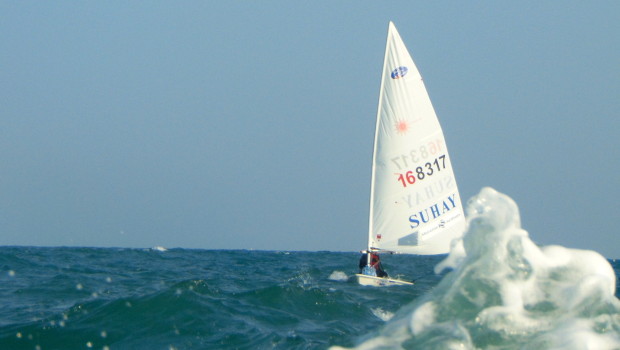


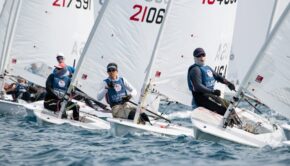
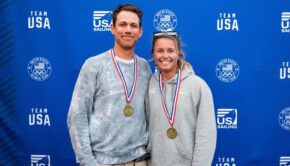
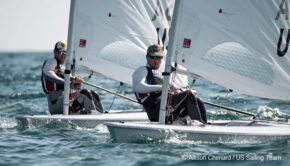
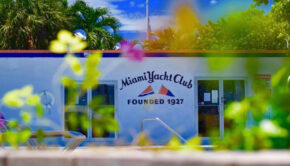
 We’ll keep your information safe.
We’ll keep your information safe.